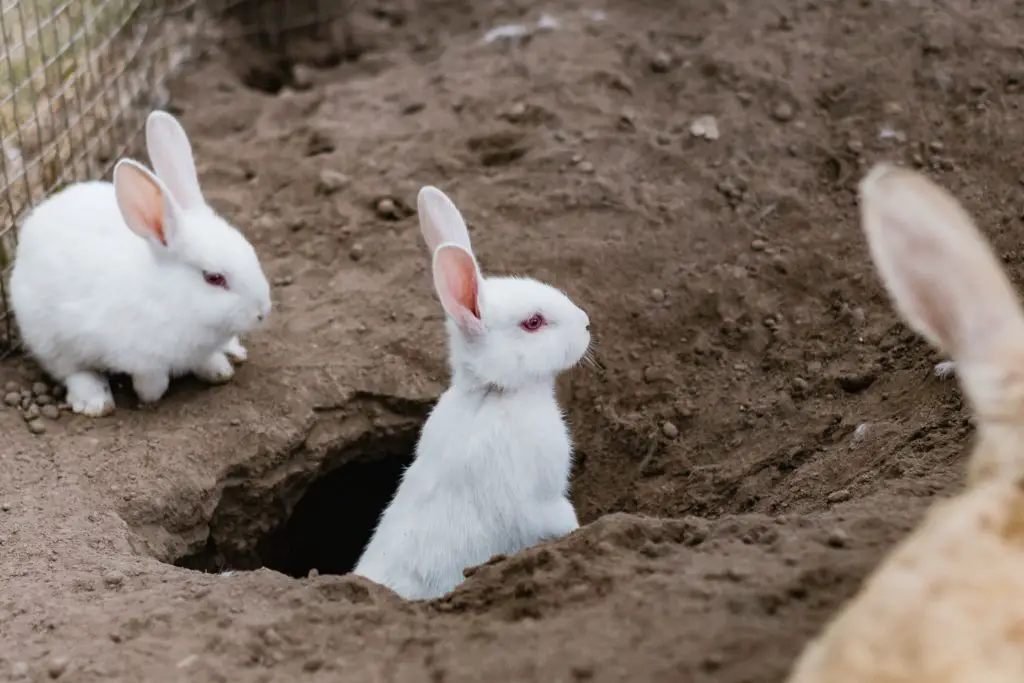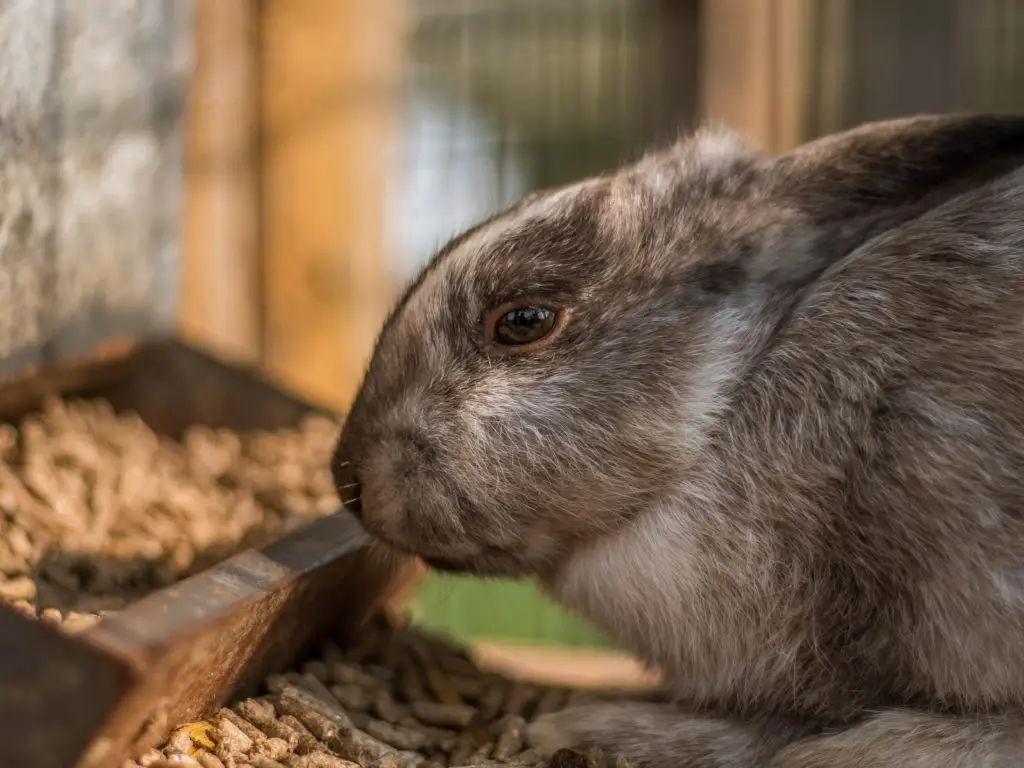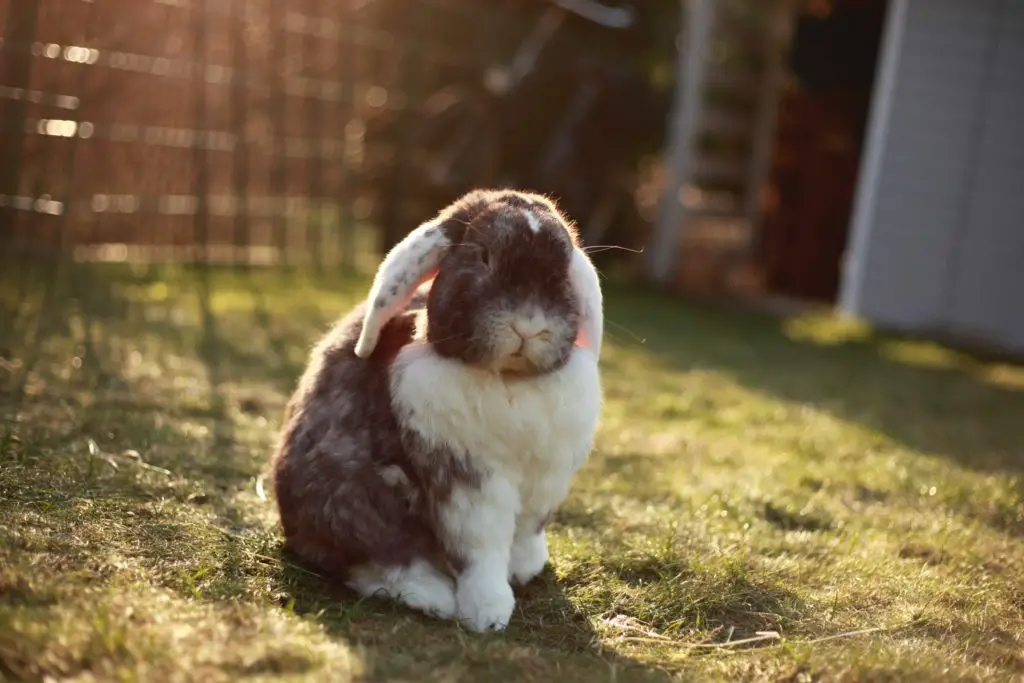Whether you are trying to keep your pet rabbit from escaping or trying to stop wild rabbits from coming in, this article will help you understand how you can do that in an effective manner.
A rabbit can fit through a gap as small as 2 – 3 inches. Indeed, a rabbit can squeeze through a gap that is a lot smaller than its body. Like many animals, if a rabbit can put its head through the gap, then its whole body will be able to pass through.
Today we will tell all about the sizes of the gaps rabbits can go through and the types of materials that will and won’t hold them.
Can Rabbits Get Through Small Spaces?
Not only can rabbits get through small spaces, but they are also practically experts at it.
An interesting fact about rabbits is that their whiskers measure the same width as their bodies. This means they can use them to check whether or not they will be able to fit through that impossibly small-looking hole. Rabbits are also known to be very flexible and agile.
Some people think that rabbits don’t have bones! Of course, this is certainly not true. It’s just that their frame is very slender. Combine this with flexible limbs and you can see why they have the ability to squeeze through the tiniest of spaces.
Rabbits that are especially fluffy, such as the angora breed, can be particularly deceiving. While their body size may seem quite substantial, mostly what you are seeing is just hair!
Their actual body size will be very similar to other medium-sized breeds. Baby rabbits will obviously be able to get through smaller spaces than adult rabbits.
What Size Mesh Can Rabbits Get Through?
If you are making an enclosure for your rabbit, then you may be wondering what size gap can a rabbit fit through. Mesh has square or rectangle-shaped holes.
If you are using it for a rabbit enclosure you don’t want the holes bigger than 1” squared. Although an adult rabbit won’t be able to escape through a hole this size, it may get its arm or leg caught, resulting in a possible injury.
If you are using wire mesh to create some type of fence, make sure there are no gaps along the bottom which rabbits could wiggle under. In most cases, you will also need to sink the mesh down into the ground.
Rabbits are notorious for burrowing and can quickly burrow under fences and escape. Sinking your mesh 3-6 inches into the ground should suffice.
If you have a wire mesh that has quite large squares you can always double it up. This means taking two pieces of mesh and lining them up so that they are slightly offset, thereby reducing the size of the gaps in the mesh.
Can Bunnies Get Through Chicken Wire?
Chicken wire has hexagonal-shaped holes. These holes can come in a variety of sizes. The three main sizes are 1/2 inch, 1 inch and 2 inches. So obviously the wire that has holes with a 2 inch diameter would not be suitable to use for rabbit enclosures or fencing.
One problem with chicken wire is that it is not as sturdy as wire mesh, which is usually welded at each joint. It can be quite flimsy, and rabbits can even chew through the chicken wire because it is quite thin. You can get different thicknesses of chicken wire though, so try and look for one that is thicker and stronger.
Can Rabbits Squeeze Through Fences?
As previously mentioned, rabbits are experts at ‘breaking free’ from their enclosed spaces. Under, over, through; keeping rabbits in, or out, can be extremely challenging.
Rabbits can easily squeeze through small gaps in fences. And depending on the material, they may even create their own gap to squeeze through, with their razor-sharp teeth.
A chain-link fence also referred to as a wire-mesh or cyclone fence, is a common type of fence. They are found in many public spaces, schools, parks, playgrounds, etc.
The holes in a chain link fence are bigger than 1 inch, so it can be possible for rabbits to squeeze through these. Often these fences also have a gap at the bottom which rabbits can get under.
If you are constructing a fence for rabbits and you are using slats, make sure that they are close enough together. Again, you don’t want a gap that is much more than 1 inch wide.
Wider gaps could be left near the top of the fence, however. While on the topic of fences, don’t forget that rabbits can also jump! Two feet high will be sufficient for most rabbits.
Related Post: How Tall/Deep Should A Rabbit Fence Be?(+Material Types)
How To Stop a Rabbit From Getting Through Small Spaces?
Now that we have discussed the sizes of the hole a rabbit can get through and some appropriate and not so much materials for a rabbit enclosure, let’s see how we can stop your rabbit from escaping.
Inspect the enclosure often
If you are looking to keep rabbits from escaping, then you will need to thoroughly examine the enclosure for any small gaps. This will need to be done on a regular basis, in case the rabbit has chewed through any materials. Some materials can also become rusted, worn, and damaged in the outside elements.
Get “rabbit fencing”
There is a product you can purchase that is referred to as “rabbit fencing.” It has been specifically developed to allow you to build quality fences that are primarily used to keep rabbits out of unwanted spaces. It is unique in that the openings at the bottom are very small but then gradually get bigger towards the top.
Build rabbit-proof fences
In some countries, you can employ contractors to come to your property to build rabbit-proof fences. In places where rabbits are considered a pest, this can be very useful. Farmers often have problems with rabbits coming in and destroying their crops.
Train your rabbit
If you have an indoor pet rabbit and you are having problems keeping it from getting into places where it shouldn’t be, you can simply train it. Using a similar approach to training a cat, if the rabbit is trying to squeeze through a small space, spray it with some water from a spray bottle. Most rabbits will find this unpleasant and hopefully learn their lesson quickly.
In Conclusion
So, whether it’s keeping rabbits in, or keeping them out, you can see that it is not an easy task. Being able to squeeze through gaps of only 2 – 3 inches, will require careful construction for any rabbit enclosure you may be wanting to build.

My name is Katie, and I have had different pets at home for as long as I can remember. While I can definitely say I love all animals in general, my heart belongs to cats and dogs. I know you are supposed to choose one or the other, but I could never really decide. I’ve also owned hamsters and fish when I was a kid, and they filled my childhood with very delightful memories.





